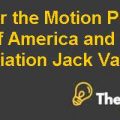Chestnut Foods Case Study Solution
Introduction
The Chestnut foods were incorporated by Mr. Otto Chestnut way back in 1877, the initial days of the company prove to be very beneficial and the company grows very quickly. In the early days of the organization, the management offers a vast range of pre-packaged foods, which remains quite profitable. The management was keen to expand the business rapidly, and for this purpose, they have acquired many companies operating in the same sector, to increase the range of products.
Apart from the inorganic growth, the management also exploits the opportunities, in organic growth as well. After the death of Mr. Otto, his sons took over the operations of the company, the new and young management also implement strategies, which were fruitful for the enterprise. Under the leadership of the children of Otto, the company survives profitably in the great depression which occurred in 1935. In 1979, the company went public and its share offered to the general public.In order to further grow the business, and to exploit the opportunities available to only public companies.
Currently, Chestnut Foods operate in two completely diversified sectors i.e. food division and instrument division. The food division of Chestnut is responsible for producing the frozen and pre-packaged foods, which are sold in almost all parts of the world(CURFFL;, 2016). The food division appears to be quite competitive, although the market size is increasing day by day, the number of competitors is also increasing drastically.As a result of this intense competition, the profit margins of all the companies operating in the sector is decreasing. On the other hand, there are still considerable opportunities for Chestnut in the food division, with a steady increase in the revenue margins.
The second division in which Chestnut is operating is the instrument category, the primary activity of instrument division, is to manufacture the equipment used in the manufacturing of the foods. The instrument division also manufactures various kinds of other instrument as well, such as defense tools. The instrument division is growing at a rapid pace, the revenues of the division are growing at a rate of 20%, and the earnings are also growing at a rapid rate as well.
Soliciting control over Chestnut
As 10% of the voting rights are recently acquired, by an experienced investor in the U.S. market. Mr. Van, is exerting significant pressure on the management of Chestnut, to divest from the instrument division and only operate in the food division. He is arguing that, the core operation of Chestnut is to manufacture frozen foods, so it should have to focus on the division in which they have sufficient expertise. Furthermore, due to the high customer loyalty and positive image of the brand, focusing on this brand is might more favorable for Chestnut. Although the arguments of Mr. Van seems to be accurate, it might have an adverse impact on the performance of Chestnut group. It is because they will just operate in the division, which has minimal opportunities for growth.
It can be argued that, Mr. Van is soliciting control over Chestnut just to gain significant short-term profits on its investment in Chestnut. The fact that instrument division is growing at an excellent rate will result in significant gains for the shareholders, if the divisionis disposed of in current times. Mr. Van is also enforcing other shareholders to vote in his favor, because of the intention of Mr. Van to achieve substantial capital gains on its investment.
WACC of Chestnut:
The WACC of food division is 6.36% whereas, the WACC of instrument division is 9.14%. In computing the cost of equity of both divisions, average equity beta of the companies operating in the respective sector is used(Giddy, 2005). On the other hand, the average credit spread of all the credit rating,is used in calculating the cost of debt. In addition to this, the average weight of equity and weight of debt of all the companies operating in the respective divisions,is used in calculating the final value of WACC(Lee).
Critical Assessment of both proposals:
The proposal of Mr. Murr is to operate in just the food division, while the proposal of Pederson was to look over the related investment of $1 billion in the instrument division, because of the availability of opportunities to grow the business. Both the proposals appears to be fruitful for the shareholders.It can be said that,proposal of Mr. Van will give short-term benefits to the shareholders, while the proposal of Pederson will increase the wealth of shareholders in the longer-term. However, the proposal of Mr. Pederson appeared to be more valuable for the company’s operations,because the revenues of the instruments division are growing at a healthy rate and the profitability of the division is also much higher, as compare to the food division.
By investing a heavy amount in the instrument division, the company would be able to increase the revenues and profits by even with higher rates. The possibility of further increase in the revenues, is making the proposal of Mr. Van unattractive. Operating only in the sector which has minimal opportunities for growth makes no sense from the shareholders, who want to gain long-term benefits from their investment. It can be said that, the Mr. Van just want to gain short-term benefits from its investment, that’s why he is forcing management to dispose of the entire instrument division...........................
This is just a sample partial work. Please place the order on the website to get your own originally done case solution.









